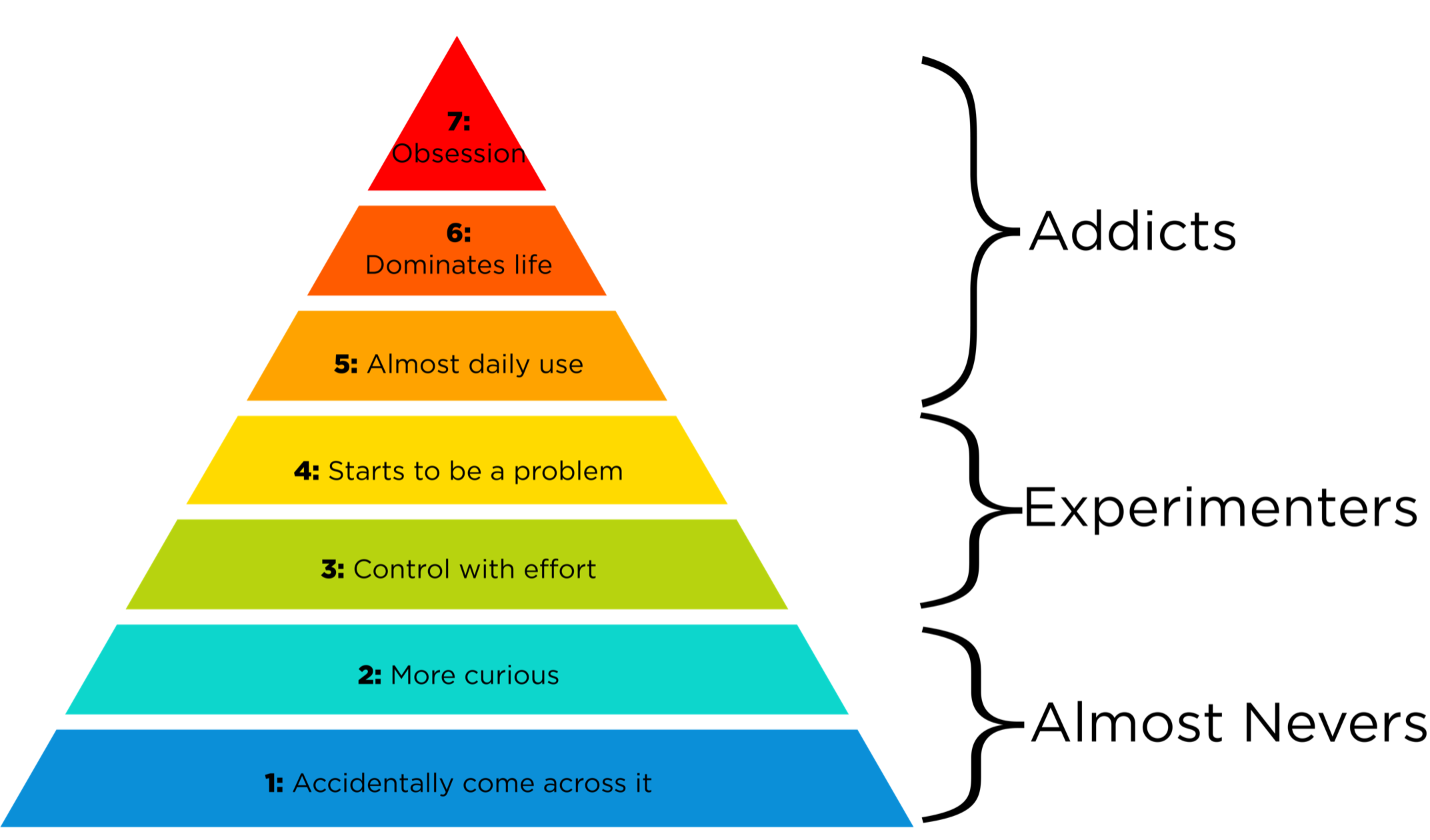7 Stages of Pornography Addiction
One of the biggest fears parents have when it comes to screens is their teen stumbling on and becoming addicted to pornography. Understanding the seven different levels of pornography addiction can help us know when to seek help for our teens. These levels are from a book called Treating Pornography Addiction by Kevin Skinner, and I combined that with some information from the Sons of Helaman website.
The Almost Nevers (levels 1 and 2):
Level One: This is the mildest form. Your teen might look at it once or twice a year or accidentally come across material on the internet. They can count the number of times they have seen online nudity.
Level Two: It does not create significant problems or dominate your teen’s thinking but their curiosity is growing.
A few other things about the almost nevers:
Usually perform at normal levels in academics, social situations, sports, music, employment, etc.
Have rare moments of unusual moods.
Quickly admit to any exposure to inappropriate material if confronted, or voluntarily reports exposures.
Will not react with too much negativity to a block being put on electronic devices and rules regarding use of and/or possession of media devices.
Will proactively decide and can avoid exposure to inappropriate material for long periods of time (at least 3 months)
The Experimenters (levels 3 and 4):
These are those who are using pornography (or other sexual misbehaviors) more frequently, but are not considered addicted yet. Natural curiosities are to be expected, but can lead to addiction.
Level Three: Their behavior starts to become compulsive. They see porn about once a month and it becomes almost unbearable to not see it. Your teen feels like they can manage their behavior through monitoring but it takes effort. They might start to have withdrawal symptoms.
Level Four: It is starting to impact their life and they focus less on work, school, and relationships. They are starting to wonder if they have a problem. They are becoming more irritable if they can’t watch it. They might have tried stopping but they failed and they are starting to feel hopeless.
A few other things about experimenters:
The frequency of exposure is increasing (or you suspect it is increasing) even if accidental.
Mood shifts are becoming more frequent.
Secrecy is becoming more frequent.
Performance in academics, social situations, sports, music, etc is beginning to be affected.
Verbalizes increased apathy toward activities that are usually interesting.
Reluctantly admits to inappropriate behavior.
Values avoiding inappropriate media, but still “slips” more than once every 3 months, but less than once every other week.
Decreasing respect to authority figures.
The Addicts (levels 5-7):
Level 5. It is a regular day to day occurrence. Your teen spends a significant amount of time watching and fantasizing. They feel overwhelmed by their involvement and they can only go a few days without watching porn.
Level 6. Pornography has dominated their life. They watch it to avoid the withdrawal. They lie about their use, cover up how much they use it, own a secret stash, and download it often. They have lost the drive to succeed at school and work and home.
Level 7: Viewing porn and sexually acting out are happening daily. They can’t focus on anything other than sex and porn. By this level their family, relationships, work, and health are suffering and it’s evident to others.
A few other things about addicts:
Experience significant mood changes
Show significant drops in self-confidence
Unable to make measurable improvements
Have bigger problems with school, work and relationships
Watch porn daily
Demonstrate noticeable patterns of sneakiness and misrepresenting the truth
Talking about this pyramid (or pornamid as my husband calls it) with your teen can help them understand whether or not they have a problem. All teens start out in the almost nevers and pornography is nearly impossible to completely avoid. Curiosity is normal. However, when they start to slide into higher levels, addiction is on its way. The sooner you can intervene, the easier it will be for them to avoid falling all the way into addiction.
For more information on pornography, addiction, and using screens as emotional buffers, check out my new course Teens and Screens: Parenting with Hope in a Digital Age. It’s available for just $27 here in the membership area of my website!
Or, to learn more about how to monitor and protect your kids from pornography, you can check out the blog post I wrote about the four layers of protection here.

